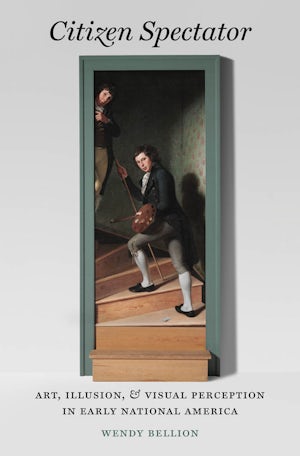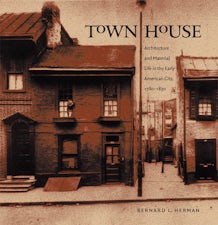Citizen Spectator
Art, Illusion, and Visual Perception in Early National America
By Wendy Bellion
388 pp., 6.125 x 9.25, 12 color and 83 b&w illus., notes, index
-
Hardcover ISBN: 978-0-8078-3388-9
Published: February 2011 -
E-book PDF ISBN: 979-8-8908-7896-0
Published: December 2012 -
E-book EPUB ISBN: 978-0-8078-3890-7
Published: December 2012
Published by the Omohundro Institute of Early American History and Culture and the University of North Carolina Press
Buy this Book
- Hardcover $65.00
- E-Book $29.99
Published by the Omohundro Institute of Early American History and Culture and the University of North Carolina Press
Awards & distinctions
2014 Charles C. Eldredge Prize for Distinguished Scholarship in American Art, Smithsonian American Art Museum
Bellion reconstructs the elite and vernacular sites where such art and objects appeared and argues that early national exhibitions doubled as spaces of citizen formation. Within a post-Revolutionary culture troubled by the social and political consequences of deception, keen perception signified able citizenship. Setting illusions into dialogue with Enlightenment cultures of science, print, politics, and the senses, Citizen Spectator demonstrates that pictorial and optical illusions functioned to cultivate but also to confound discernment. Bellion reveals the equivocal nature of illusion during the early republic, mapping its changing forms and functions, and uncovers surprising links between early American art, culture, and citizenship.
About the Author
Wendy Bellion is associate professor of art history at the University of Delaware.
For more information about Wendy Bellion, visit
the
Author
Page.
Reviews
“Bellion offers here a beautifully written, handsomely produced, and challenging analysis. Recommended. Upper-division undergraduates, graduate students, and researchers/faculty.” --Choice
"Among the most significant book-length studies of early American art to appear in print during the past decade."--Common-Place
“With its careful contextualization and detailed, historical analysis of the cultural forms of illusion, this book firmly locates its discussion of early national visuality within the cultural practices of everyday life and thus makes a substantial contribution to the empirical history of spectatorship in the United States.”--American Historical Review
“Admirable and groundbreaking . . . . Significant both for its extensive research into the culture of spectatorship in Philadelphia and for the ways in which it opens up further modes of inquiry for scholars interested in the Early National period.”--Association of Historians of American Art”
“Bellion is a skilled expositor of images, and each of her essays leaves us with a deeper understanding of works we might imagine were plumbed long ago.”--Journal of American History
"Citizen Spectator is a wonderful book--clever, learned, insightful, and surprising. Bellion writes brilliantly about art, illusion, optics, and perception, leading readers through the rich visual worlds of early national Philadelphia and into the tumultuous politics of the new American nation."--Ann Fabian, Rutgers, The State University of New Jersey


